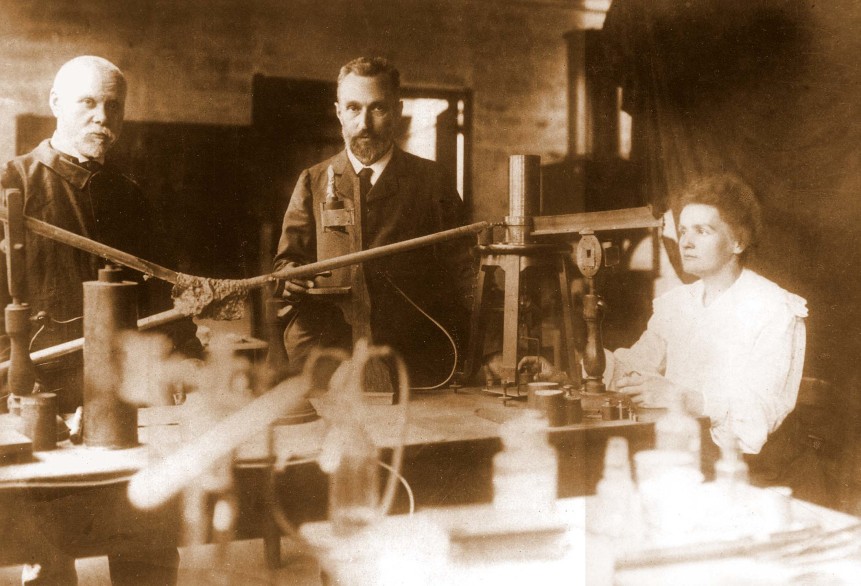Marie Curie:
Defining Her World Through Science
Breaking Barriers
In the early 1900s, females were expected to be quiet, and a woman going to a university was nearly unheard of. Through the late 1800s, women began to challenge these socially accepted ‘rules’ and fight for their rights. France's Sorbonne already accepted women. Aspiring females such as Marie Sklodowska and her sister assisted each other in attending the Sorbonne. Marie Sklodowska married fellow scientist Pierre Curie, giving her the name Marie Curie, and went on to break barriers through the discovery of two new elements, and winning the Nobel Prize twice.
The death of Pierre Curie in April 1906 affected Marie’s life in many different ways. “On May 13, 1906, she was appointed to the professorship that had been left vacant on her husband’s death; she was the first woman to teach in the Sorbonne” (“Marie Curie” [Encyclopaedia Britannica]). The death of Pierre Curie was a cursed blessing for Marie: while he was alive, the Sorbonne was unwilling to offer Marie a job teaching there. Upon his death, they offered Marie Pierre’s old job. After Marie Curie died, both Curies’ remains were transferred to the Pantheon, the National Mausoleum of France (“Marie Curie” [Atomic Heritage Foundation]). This made Curie the first woman to be moved to the Pantheon on her own merit (Ibid).

(“Marie and Pierre Curie with co-laureate Henri Becquerel, 1898” Nobel Prize Organization, 1898.)